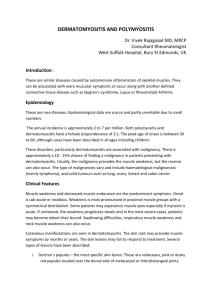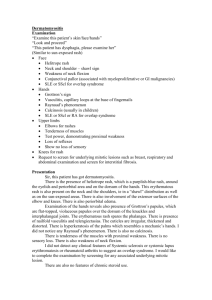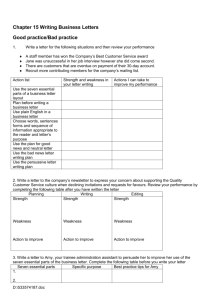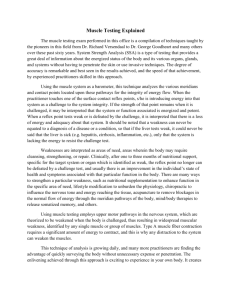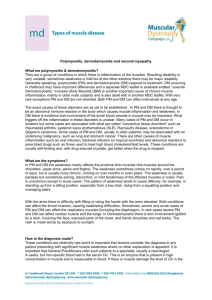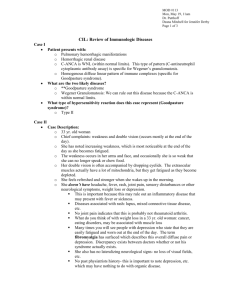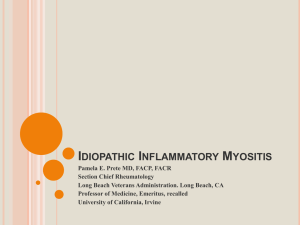Myositis is a rare disease in which the muscle fibers and skin are
advertisement
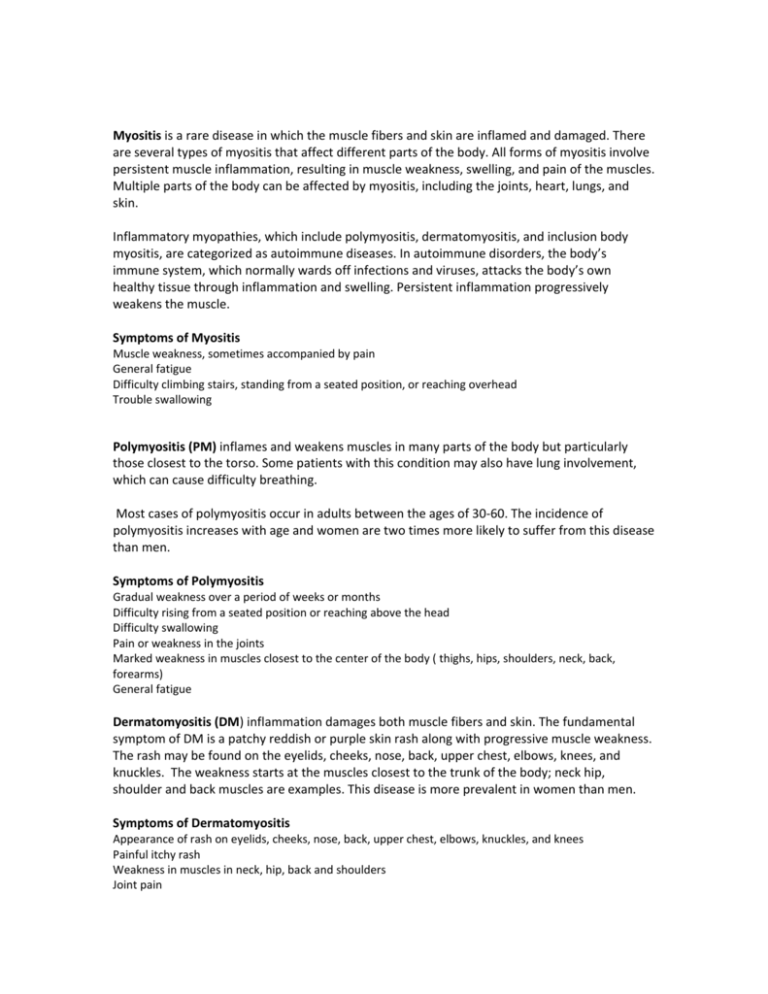
Myositis is a rare disease in which the muscle fibers and skin are inflamed and damaged. There are several types of myositis that affect different parts of the body. All forms of myositis involve persistent muscle inflammation, resulting in muscle weakness, swelling, and pain of the muscles. Multiple parts of the body can be affected by myositis, including the joints, heart, lungs, and skin. Inflammatory myopathies, which include polymyositis, dermatomyositis, and inclusion body myositis, are categorized as autoimmune diseases. In autoimmune disorders, the body’s immune system, which normally wards off infections and viruses, attacks the body’s own healthy tissue through inflammation and swelling. Persistent inflammation progressively weakens the muscle. Symptoms of Myositis Muscle weakness, sometimes accompanied by pain General fatigue Difficulty climbing stairs, standing from a seated position, or reaching overhead Trouble swallowing Polymyositis (PM) inflames and weakens muscles in many parts of the body but particularly those closest to the torso. Some patients with this condition may also have lung involvement, which can cause difficulty breathing. Most cases of polymyositis occur in adults between the ages of 30‐60. The incidence of polymyositis increases with age and women are two times more likely to suffer from this disease than men. Symptoms of Polymyositis Gradual weakness over a period of weeks or months Difficulty rising from a seated position or reaching above the head Difficulty swallowing Pain or weakness in the joints Marked weakness in muscles closest to the center of the body ( thighs, hips, shoulders, neck, back, forearms) General fatigue Dermatomyositis (DM) inflammation damages both muscle fibers and skin. The fundamental symptom of DM is a patchy reddish or purple skin rash along with progressive muscle weakness. The rash may be found on the eyelids, cheeks, nose, back, upper chest, elbows, knees, and knuckles. The weakness starts at the muscles closest to the trunk of the body; neck hip, shoulder and back muscles are examples. This disease is more prevalent in women than men. Symptoms of Dermatomyositis Appearance of rash on eyelids, cheeks, nose, back, upper chest, elbows, knuckles, and knees Painful itchy rash Weakness in muscles in neck, hip, back and shoulders Joint pain Trouble swallowing Hardened lumps under the skin Difficulty rising from a seated position or getting up after a fall Hoarseness in voice Inclusion body myositis (IBM) is an inflammatory muscle disease characterized by chronic muscle inflammation accompanied by muscle weakness. IBM generally affects both proximal muscles (close to the trunk of the body) and distal muscles (further away from the trunk). Muscle weakness may affect only one side of the body ; thus, falling and tipping are usually the first obvious signs of the disease. Patients will also develop weakness in the wrists and fingers and atrophy of the forearms and/or thigh muscles. Difficulty swallowing occurs in almost half of all IBM cases Patients suffering from IBM usually develop symptoms after age 50, although the disease can occur earlier. Unlike other forms of myositis, IBM is approximately two times more common in men than in women. Symptoms of Inclusion Body Myositis Slow progression of muscle weakness Weakness in thighs, wrists, and fingers Difficulty swallowing Frequent falls
